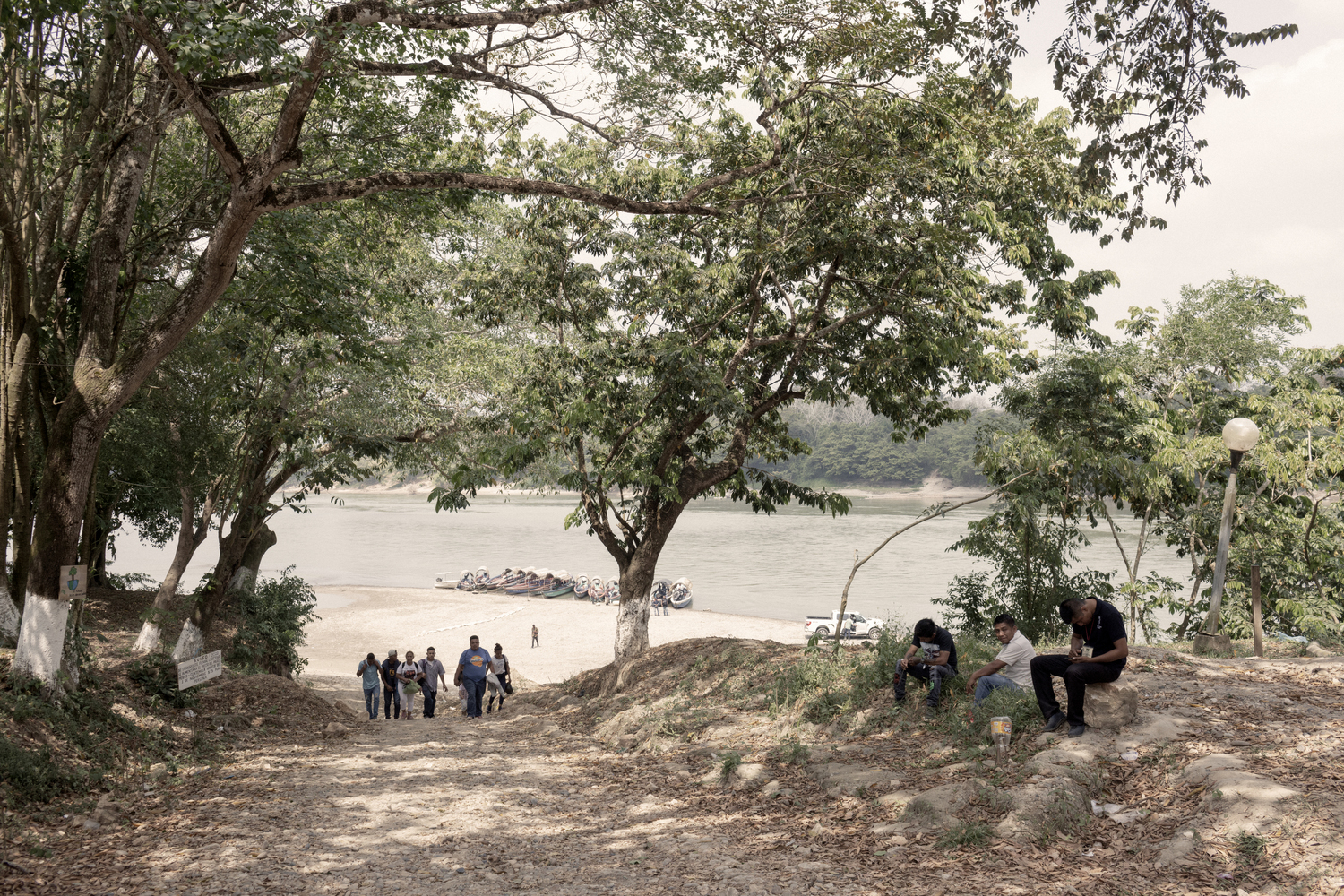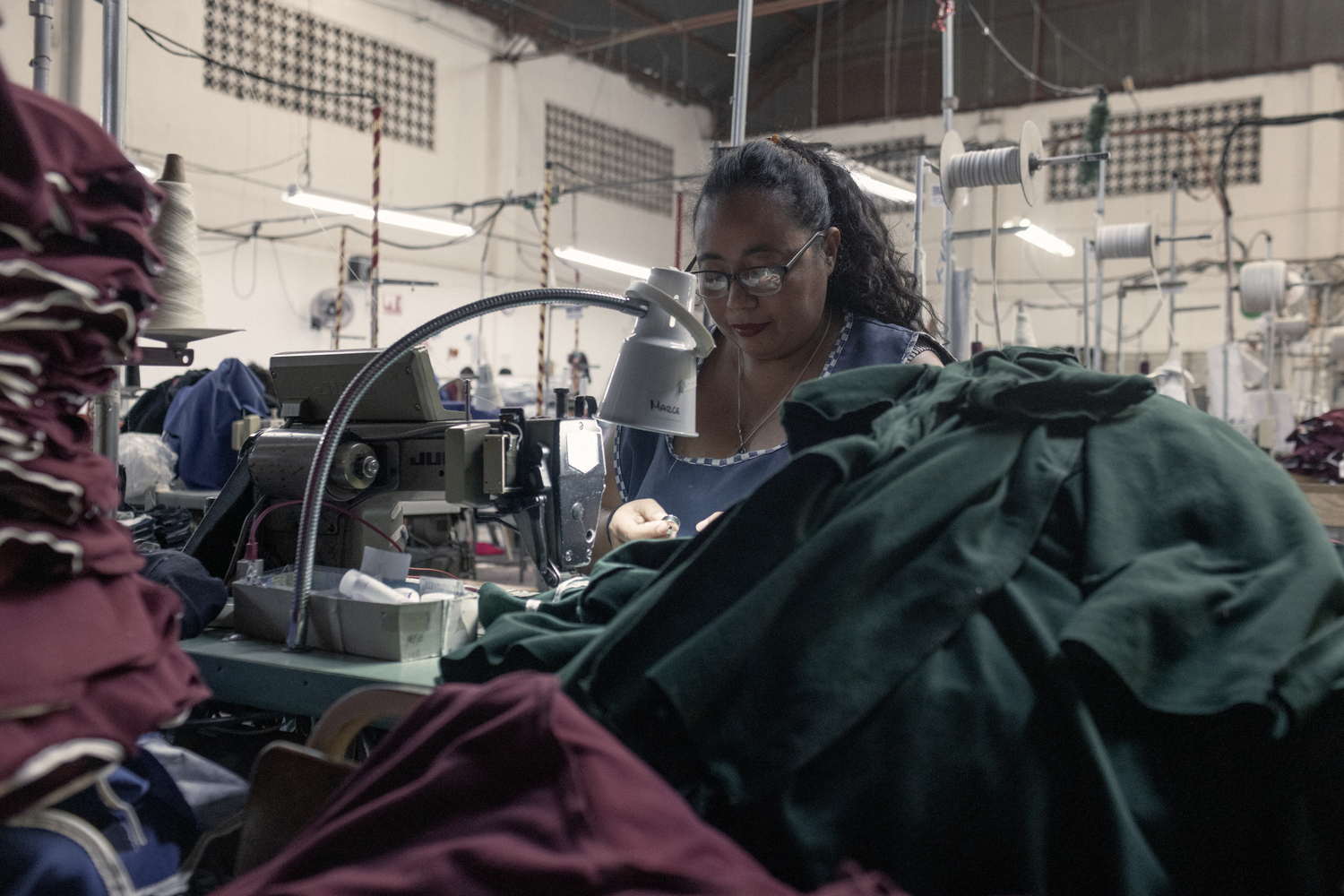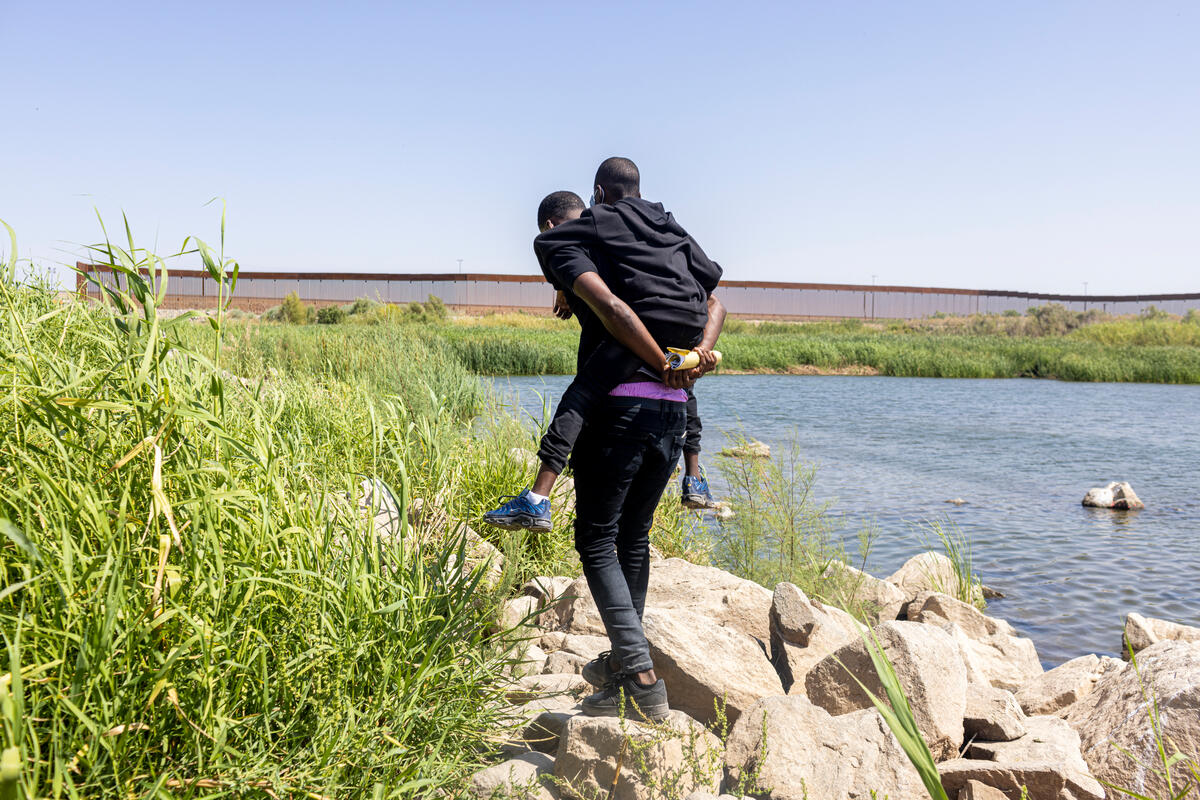Deported children face deadly new dangers on return to Honduras
Deported children face deadly new dangers on return to Honduras

SAN PEDRO SULA, Honduras, January 29 (UNHCR) – The gunman was waiting as Marco Antonio Cortés boarded a bus in the north-west Honduran city of San Pedro Sula. One pull of the trigger and the 18-year-old was dead, adding to the alarming toll of young Honduran males who are attacked, killed or simply disappear after being deported from the United States or Mexico.
"It's not just one, two or three that are killed after their deportation," says Sister Valdete Wilemann, who runs a state-owned centre that puts up some of the deportees who return to Honduras. Many, like Cortés, made their way by irregular routes to the US and Mexico to escape the mounting insecurity back home for the young, including threats, extortion, gang violence and executions. Others head north in search of a better life.
The victims are typically aged between 13 and 17, sent back home after being detained by immigration authorities for entering the country without authorization. But a report released last year by UNHCR, entitled "Children on the Run," found that a significant number of minors from El Salvador, Guatemala and Honduras entering the US irregularly might be in need of international protection.
"We believe that if their cases were further analyzed many would be recognized as refugees with a well-founded fear of persecution and lack of protection in their countries," said Marta Juarez, director of UNHCR's Americas Bureau, who also cited the findings of a fact-finding mission last year to Honduras as further evidence. UNHCR advises the authorities on the protection of displaced people and their families.
In San Pedro Sula's El Edén centre, where deported unaccompanied minors and families are initially accommodated, 36-year-old Adalberto Guzmán told members of the assessment team that he was worried for the safety of himself, his wife and their three children, aged between three and 12 years. They had just arrived from Mexico.
Guzmán explained that he had lent US$1,000 to a man in his home town, taking the man's motorbike and a TV as guarantee. When Guzmán insisted that the debt be settled on time, things got ugly. "Suddenly a boy of about 15 appeared at our house and said to all of us: 'If you don´t return the motorbike and the TV, you will all die,'" Guzman's 12-year old son Isaac,* recalled.
The family fled to Mexico; Guzmán did not want his children to end up dead like a growing number of other young people in the city. "From January to July [last year], 93 minors died violently compared to six accidental deaths. By mid-September, we had already 200," said forensic pathologist Hector Hernández at the city morgue, pointing out a dramatic rise in the number of young people suffering unnatural deaths.
On the day that UNHCR visited, the body of Alfredo* was delivered to the mortuary. The 11-year-old had wanted to become a doctor and his distraught mother said she worked extra shifts at a garments factory to pay for his education. He was strangled, Hernandez noted, adding: "With minors, bullets are a less frequent cause of death than in adults. Half of them are killed by suffocation."
Alfredo was not a deportee and it's not known how many of the other young people brought to the city morgue this year had fled the country only to be returned. But these deaths do show a pattern of rising violence that is triggering displacement among young men and teens scared for their lives. It's a similar story in El Salvador and Guatemala.
In September, a group of eight people, some of them aged 16 or 17, were forced to lie down in a San Pedro Sula street and then shot. It seems likely that this was a gang-related execution, which are usually linked to forced recruitment, unpaid debt (including for smuggling someone out of the country); extortion; or turf wars. The powerful maras, mainly teenage-led urban gangs, have considerable influence, striking fear into all - especially other young people.
Adolescents who try to avoid the influence of the maras, live an honest life and resist recruitment as drug dealers, can be at risk without realizing it. Marco Antonio Cortés, the boy shot dead at the bus station, was one such victim.
He lived in Brisas del Rosario, a small mara-controlled settlement on the outskirts of San Pedro Sula. It's widely regarded as one of the more dangerous districts, like Sector Rivera Hernandez, where people risk being shot if they walk from one street to another.
And when people like Cortés do get out, they cannot return safely to gang-controlled areas. In 2013, a 27-year old man returned San Pedro Sula after seven years, believing all his persecutors were dead. He was murdered four days later.
Other reasons for flight include the killing of relatives and being witness to a gang crime. But deciding to flee overseas is no easy decision because of the cost and the risks involved. Abuse and violence are frequent companions of both migrants and people seeking protection, and scams by officials at borders. Those caught face deportation.
Karla López, a psychologist at the El Edén centre, tells of a group of irregular migrants who were abducted for two weeks in Tampico, Mexico, to press for ransom from their relatives in the US and Honduras. "Finally, Mexican police found them locked into several private houses and freed them," said López, adding that they were all deported. According to official figures from Mexico and Guatemala, more than 30,000 people were brought back by bus, including some 6,200 unaccompanied minors, in the first eight months of 2014.
Thousands of others were flown back from the United States. Children and families land in Palmerola, where UNHCR is seeking access to them from the authorities. Adults are flown to San Pedro Sula. According to media reports, more than 38,000 deportees were flown to the two airports between January and mid-September last year, compared to 32,000 Hondurans for the whole of 2013. For many, their return home is just the start of another, often more dangerous, journey.
* Name changed for protection reasons
Read the report Children on the Run








